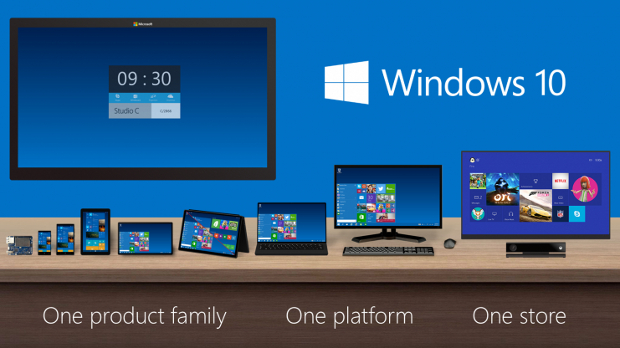The news, hard on the heels of the Windows 10 preview, comes in a blog post from Microsoft Office product manager Julia White, who also confirmed the existence of Office 2016 as an ongoing project within Microsoft to build the next generation of the venerable desktop applications.
White also announced that the new “universal” class of touch-optimised Office apps will be called “Office for Windows 10,” implying that users of Windows 8.1 and earlier versions of the OS will need to take advantage of that free-for-one-year Windows 10 upgrade offer.
“As ‘universal’ Office apps,” White wrote, “they truly are the same app across device size, providing a consistent way for independent software vendors and developers to extend and integrate with Office apps.”
It is a cryptic statement, but it appears to imply that the “universal” Office apps will attempt to create their own ecosystem of third-party extensions and add-ons, similar to — but separate from — the Desktop Office ecosystem that already exists. Microsoft declined further comment, saying the company would have more to share in the coming months.
There will be six apps in Office for Windows 10: Word, PowerPoint, Excel, OneNote, Outlook Mail and Outlook Calendar. During a demonstration at the Windows 10 event, Outlook for Windows 10 appeared as a single component in tablets, splitting itself into the Mail and Calendar components for smartphones and small mobile devices. A Microsoft official took the time to tout this splitting capability as a key benefit of Continuum, a technology that informs software about the platform on which it’s running so it can adapt itself accordingly.
Familiar apps
Users of the current Office apps for iPad will find the Windows 10 apps nicely familiar. The design principles and choices of functionality, at least from these early glimpses, appear mostly the same. Menu categories are given plenty of space for wide fingertips, and menu commands are laid out in a streamlined, condensed version of the famous Office ribbon. Only the most basic and frequently used features appear here, and there’s no indication that these features will be open to direct customisation by the user as they are in desktop Office.
PowerPoint will allow pen-based annotation, taking advantage of the fact that styluses are standard equipment on Surface Pro tablets. Live annotations let the tablet serve as an animated whiteboard, with drawn elements being projected to displays along with slides.
Preview editions of the “universal” suite will be made available in the coming weeks from the Windows Store for testers of the Windows 10 Technical Preview, according to White. White reiterated that Office for Windows 10 will be pre-installed on Windows Phone 10-based smartphones and small tablets. In recent months, Microsoft has defined “small tablets” as having 203mm (8”) screens or smaller. No news is available yet as to the final pricing of Windows 10 Office for larger screens, or how that price scheme will be related to existing Office 365 subscriptions.
Beyond confirming the existence of the Office 2016 desktop application suite, White’s post offered few other details. She said that these applications will be “best suited for a PC with keyboard and mouse” and that there may be new components to the desktop suite. It’s safe to assume the desktop suite will run on older versions of the OS, and not just on Windows 10.
Whether the 2016 edition will be the last numbered version of Office — as Windows 10 was said to be the last numbered version of Windows — also remains an open question.
Universal option
One possibility raised during the preview session was that Office 2016 would not include a desktop counterpart to Outlook, and that the “universal” app may suffice. Company representatives did say Wednesday that the Outlook “universal” app would perform every function that the desktop version currently performs, including live syncing with multiple Office 365, ActiveSync, and Microsoft Exchange accounts, alongside POP and IMAP. With that being the case, while stopping short of ruling out Outlook in Office 2016, they conceded that a desktop version may not actually be necessary.
Scott M Fulton, IDG News Service






Subscribers 0
Fans 0
Followers 0
Followers